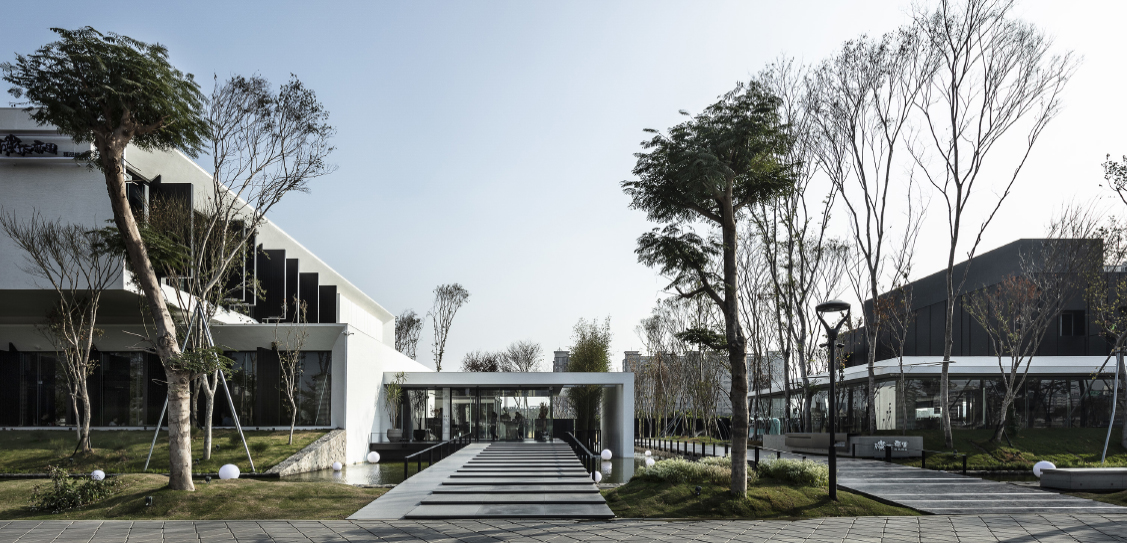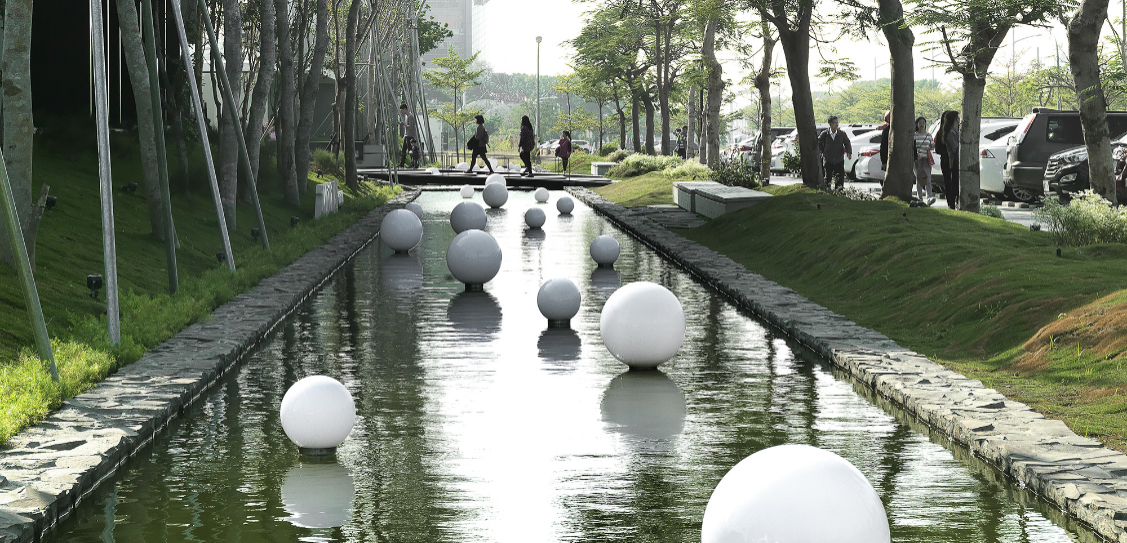Living in a fairly large city, most people of Kaohsiung do not have the time to truly appreciate nature, which is why Ken Lo, when asked to create a third restaurant in the Tan Zuo Mali chain, he pushed himself to change his perspective about restaurant dining and green spaces.
The 5,950m² project incorporates both a rest space and a dining space. As the wide stretch of land has insufficient lighting during night time, the lighting that has been provided creates its own atmosphere by highlighting the project’s forest-like greenery.
At the main entrance, the 120-meter landscape pool builds a connection between water and the building, with the bridge accentuating the atmosphere for guests as they enter. More than 250 trees surround the restaurant, adding to the feeling of entering another world whilst reducing carbon emissions.
During the initial stages of the project, significant time was spent on improving environmental sustainability. Materials like marble, which are traditionally imported, were locally sourced in order to further reduce emissions from transporting materials. To reduce energy consumption of the building, secondary materials were also used. Recycling and sustainability were taken into account when considering which materials to use, and ones such as metal were modularised.
With its central location, the glass arboretum increases the amount of natural light in the interior of the restaurant. This, with greenery and simplified interior decorations highlights the project’s respect of the relationship between the building and the green environment and blurs the boundary between the exterior and interior spaces.
After two previous restaurants in the successful chain, the Green Isle challenged the Ken Lo to design a unique project whilst meeting the needs of the environmentally-conscious consumer. This project shows what environmental sustainability should look like in the commercial restaurant space.



